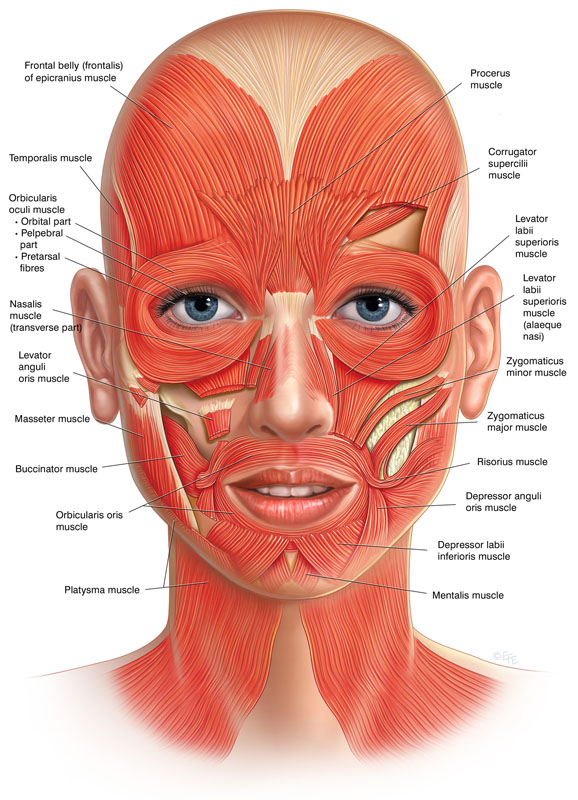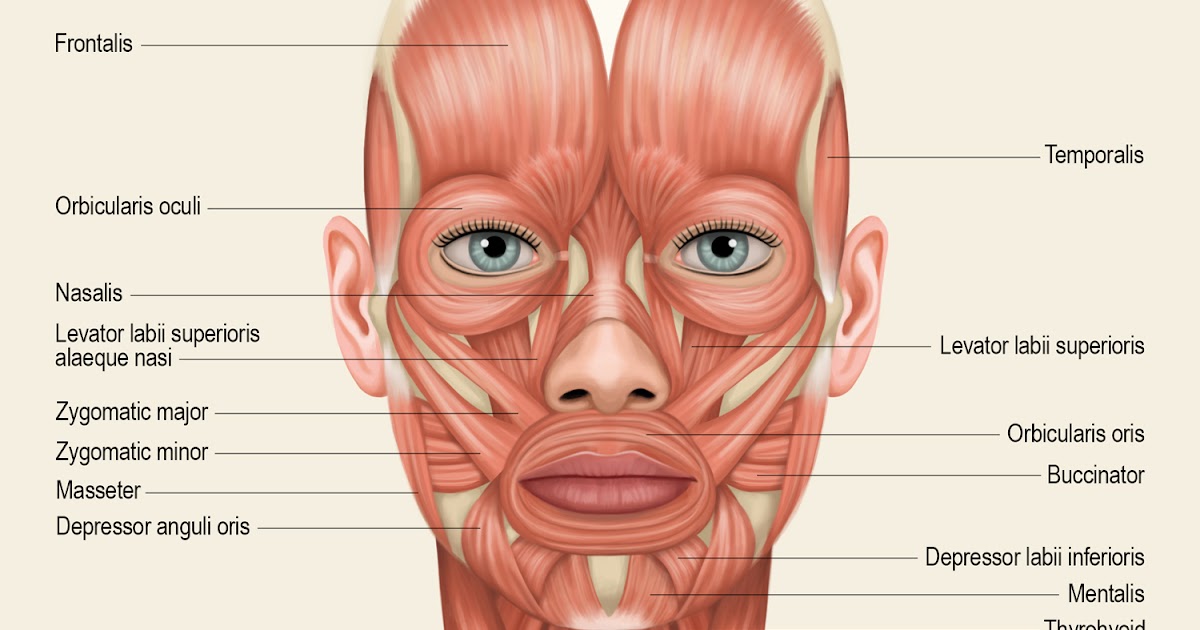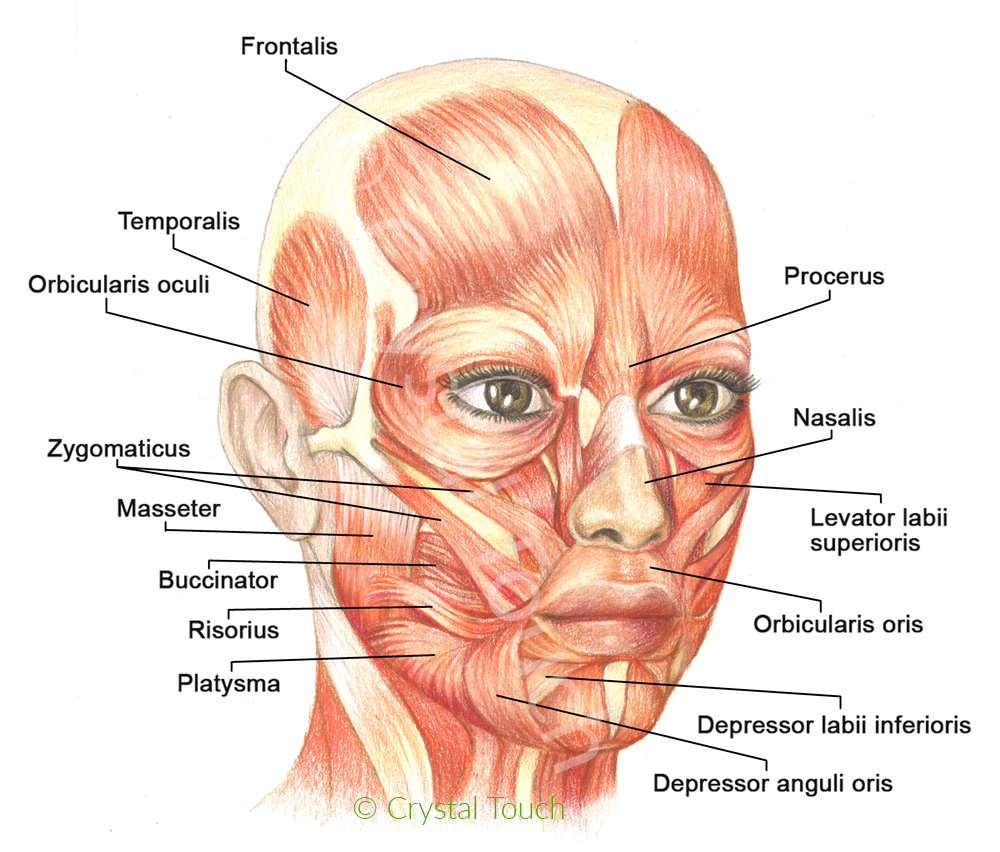How to make long face shorter? without surgery using facial muscles? posted on June 19, 2014

Facial Anatomy Yes, you do need to know the bones and muscles of the face!


Facial muscles. The facial muscles are a group of about 20 flat skeletal muscles lying under the facial skin. Most of them originate from the skull or fibrous structures and radiate to the skin through an elastic tendon. Contrary to the other skeletal muscles they are not surrounded by a fascia (except the buccinator).

The muscles of facial expression are located in the subcutaneous tissue, originating from bone or fascia, and inserting onto the skin. By contracting, the muscles pull on the skin and exert their effects. They are the only group of muscles that insert into skin.



Facial Action Coding System (FACS) is a system to taxonomize human facial movements by their appearance on the face, based on a system originally developed by a Swedish anatomist named Carl-Herman Hjortsjö. It was later adopted by Paul Ekman and Wallace V. Friesen, and published in 1978. Ekman, Friesen, and Joseph C. Hager …
Exercise any muscle and it will respond by firming and toning. A leg muscle responds to exercise the same way a facial muscle responds to exercise. Facial
A facial expression is one or more motions or positions of the muscles beneath the skin of the face. According to one set of controversial [citation needed] theories, these movements convey the emotional state of an individual to observers. Facial expressions are a form of nonverbal communication.They are a primary means of conveying social …

Facial Exercises Vs Facialbuilding “Having reviewed facial exercise programs for my patients, I found facial exercises by FlexEffect superior in every aspect, scientifically sound and by far the most comprehensive”
The there are many muscles which are responsible for facial expressions. Find out which muscles are responsible for smiling, frowning, winking and kissing
Save time learning, be better prepared and learn everything about this topic: Overview of the muscles responsible for facial expression.

